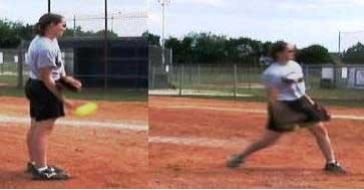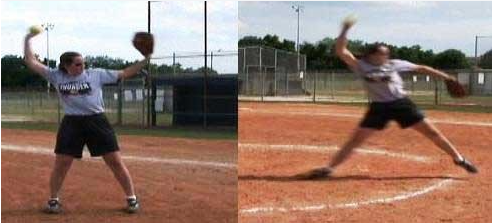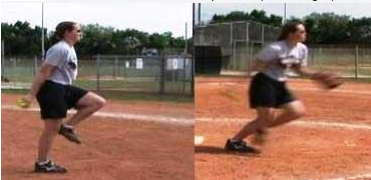|
By: Cindy Bristow Provided by: Softball Excellence Warming up is something that all pitchers have to do, but something that we don't put enough thought or purpose into. Discover 4 keys to making sure your pitchers are making the most of their warm-ups. While we've analyzed and torn the pitching motion to shreds, the pitcher's warm-up is the area of pitching that we've put the least amount of thought into. Most of us leave the pitcher's warm-up to our pitchers, and most of them have no clue what they need to do to get themselves game-ready. I've never understood why a softball pitcher needs 30-45 minutes to warm-up while a Major League Baseball pitcher (who throws close to 100mph) will warm-up for 20 minutes and then they are good to go! Warming up for any skill should achieve a number of things: it should help the player raise her body temperature, stretch her body parts, and increase her mental focus. In addition, a pitcher needs to warm-up her motion and each of her pitches. All this without wearing herself out, and making sure she's ready for the first batter and the first inning. Whenever I watch a pitcher warm-up I'm constantly amazed at how long it takes, how many crazy drills a pitcher will include, and how there really isn't a purpose or a specific ending point. Think about it. A pitcher will typically start warming up by standing about 6-8 feet away from the catcher and doing some manner of wrist snaps. She'll then move back about 5 feet and get into some kind of K position and throw a bunch of pitches before moving back to do some other kind of crane-like position throwing a bunch more pitches. Then she will move behind the rubber and do a ton of walk-throughs. Finally, she will get to the rubber, looking like she's standing in cement, and start to pitch. Taking all this into consideration, at least 20-25 minutes have elapsed before she throws one pitch from the rubber. When she goes into the game she really isn't ready for the first batter, saying "it takes me a while to get going", yet she was "warming up" for over 40 minutes. Sound familiar? The problem with this kind of warm-up is that there really isn't a purpose or a limit to it. While pitching drills done right are a great way to help a pitcher improve a specific aspect of the motion, their place is in pitching practice. Not in warm-ups, where getting ready to dominate in a game is the goal. Below, we look at some keys to an effective pitching warm-up that will not only shorten the warm-up process, but will result in a warmed-up pitcher, ready to be her best from first pitch to last: Let's look at 4 keys for having an efficient and successful warm-up: 1. It's Not Practice
2. Drill it Right
If we look at these 3 drills and where they actually occur during the pitching motion, we can see if these drills will actually be helpful for a pitcher and improve her motion, or not. Remember, your pitcher isn't trying to warm-up to win a drill-off, she's trying to warm-up to win a game! So make sure that if you're using drills in warm-ups (or at any time) they are done in as close to the correct pitching motion position as possible. Wrist Snaps:
K Position:
Crane or Stork:
3. The Role of SLOW
4. Set a Limit
When I used this scaled down and more focused warm-up with two different skill level pitchers it was amazing at how fast each pitcher got warm. I had a college pitcher and a 15 year old pitcher, and I didn't tell either one how to warm-up or what to do. They each did the above mentioned warm-up and limited each stop to 10 pitches. They started completely cold and stopped when they felt they were ready to go into a game and pitch. The following figures are from 1st pitch to completely warm and ready to go into the game: 15-year-old Pitcher:
College Pitcher:
I know it seems incredible, but we need to examine why we do the things we've always done and see if there might be a better, and more efficient way to do them – pitching warm-ups included. |










